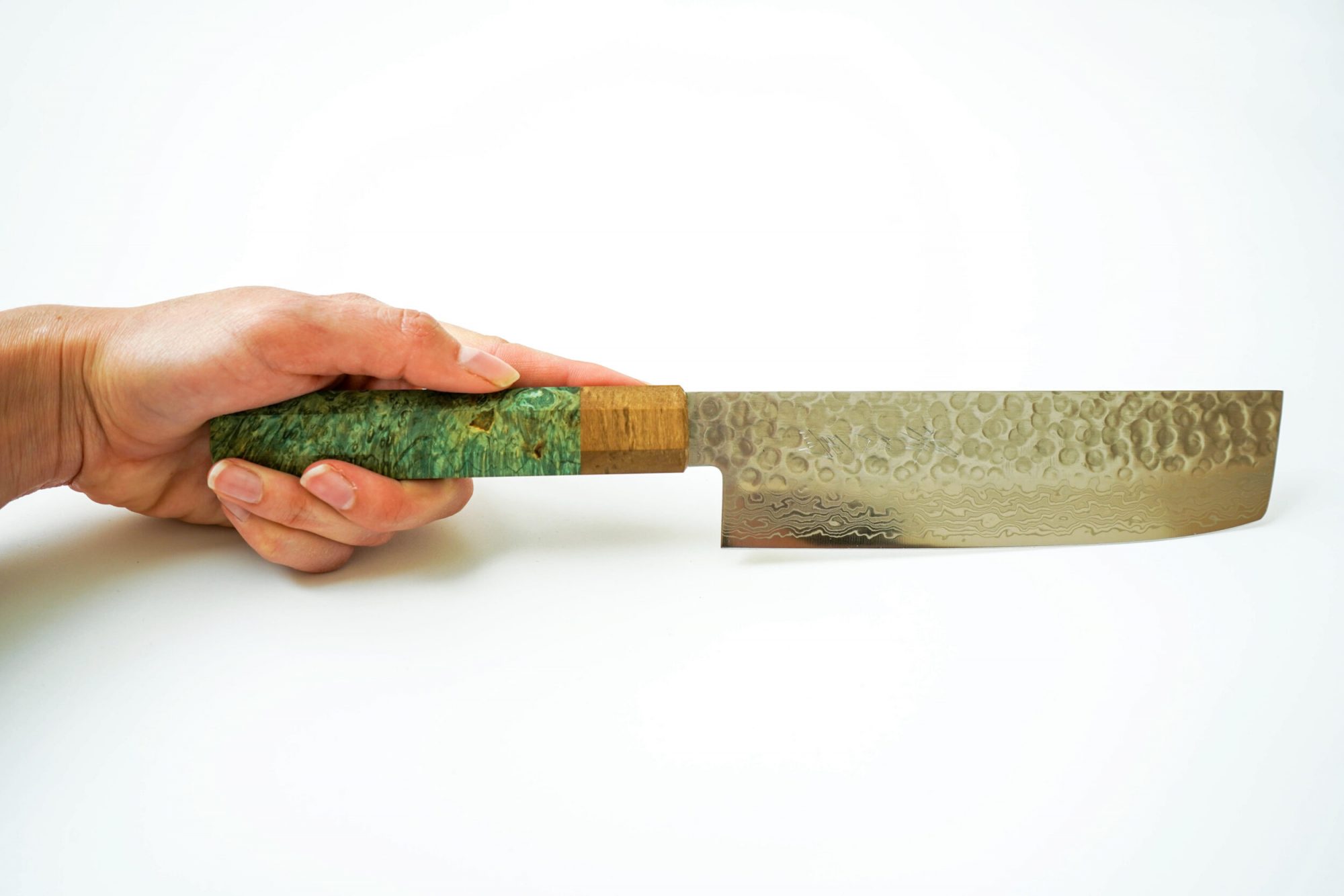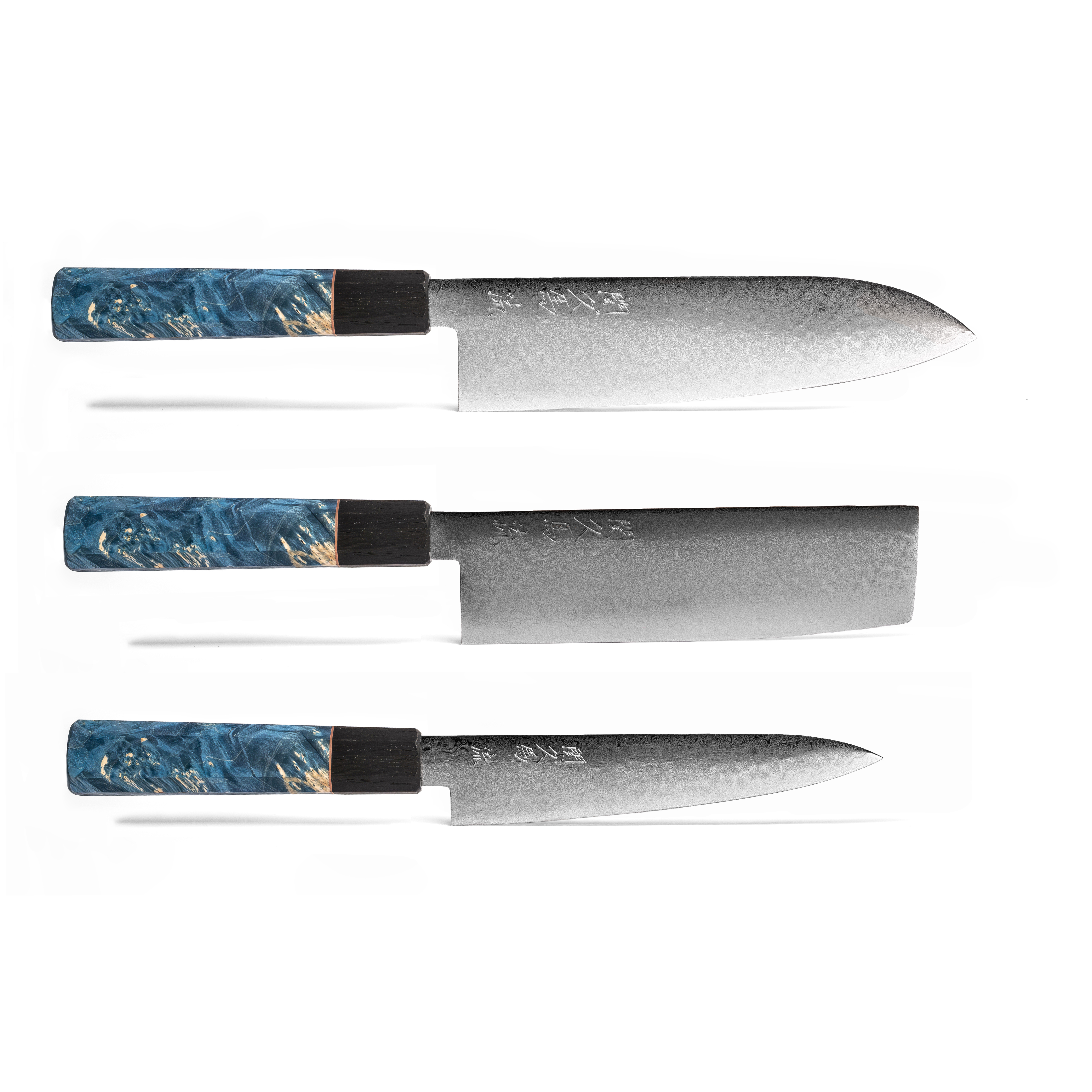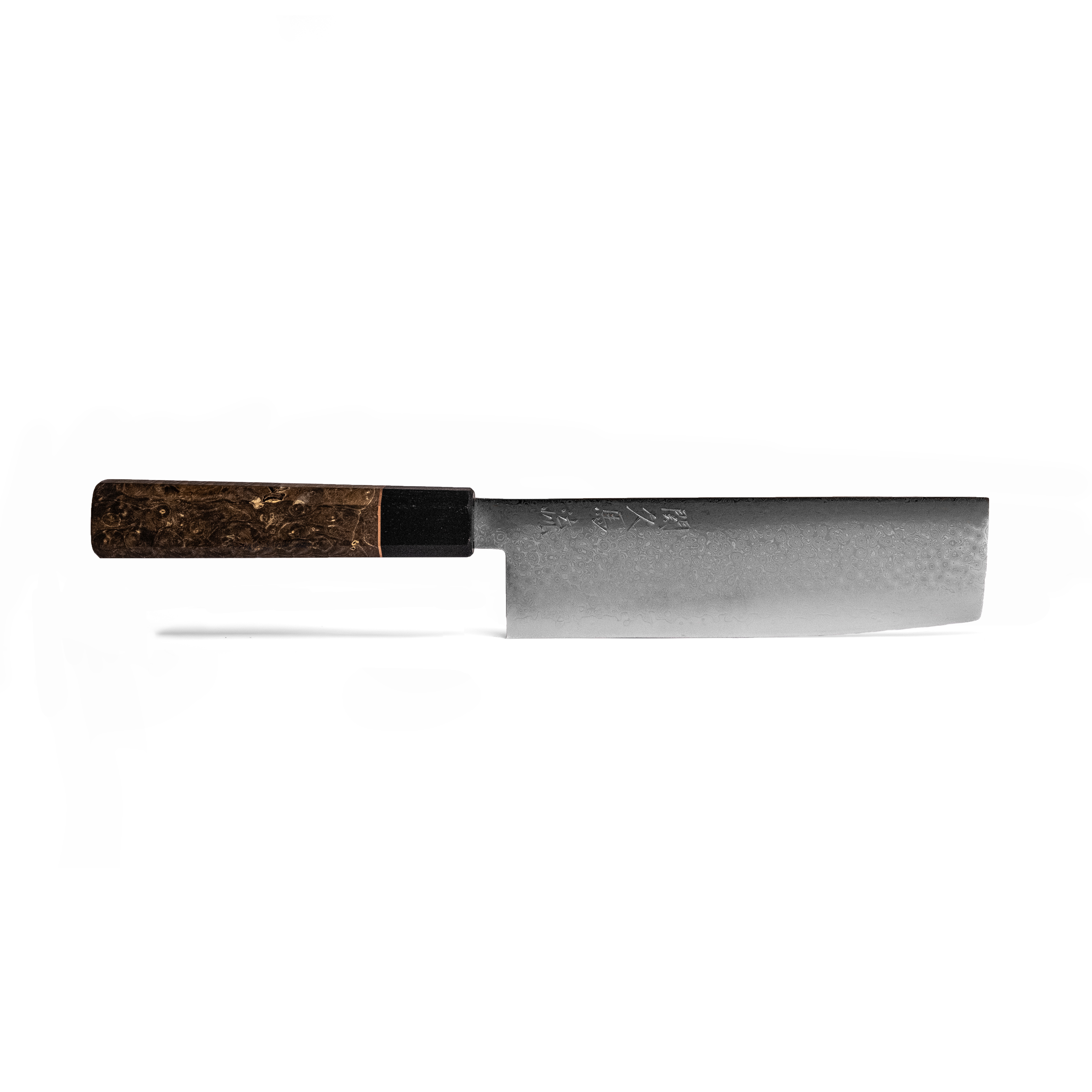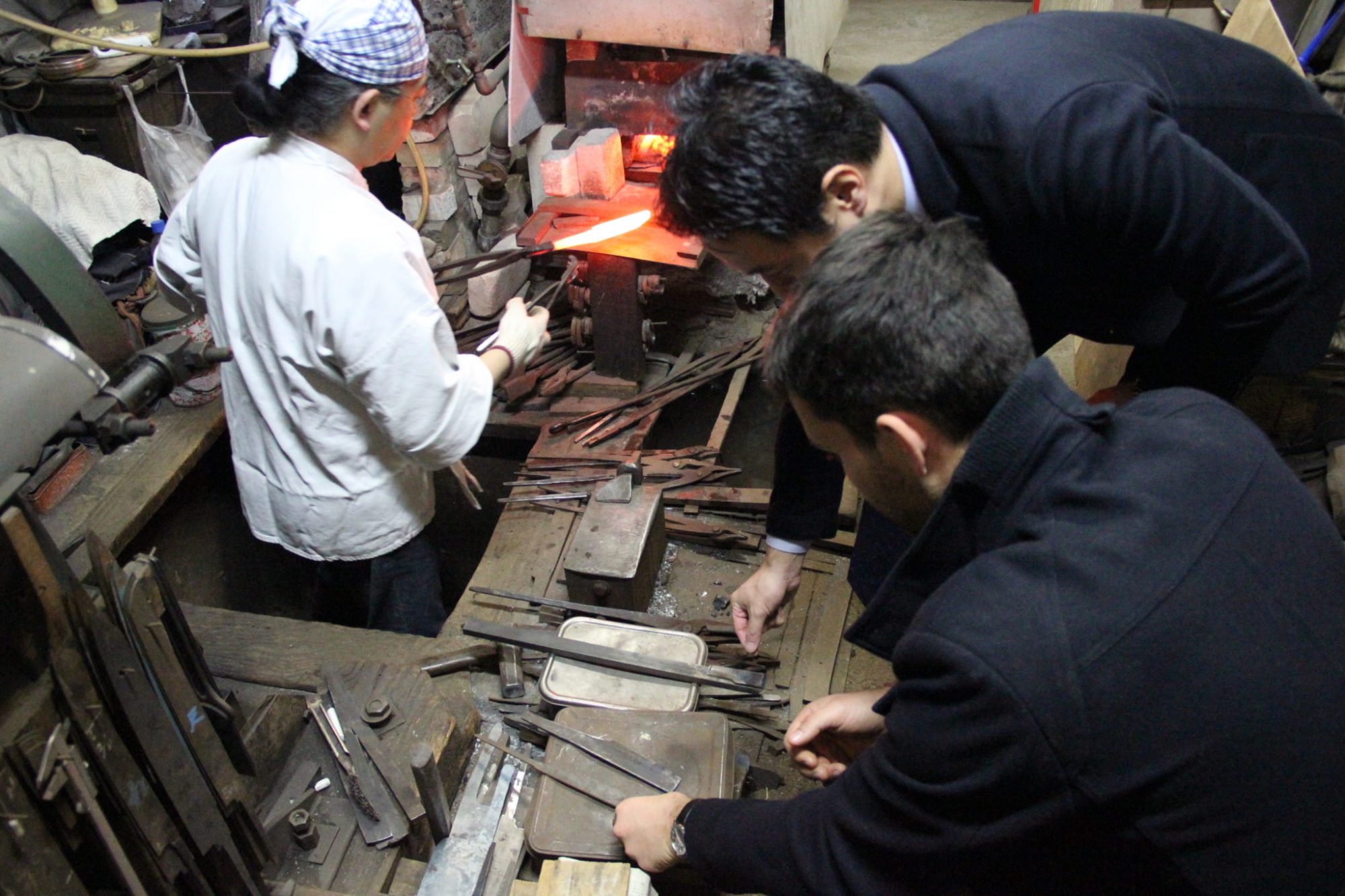Japanese knives have become an essential kitchen tool for any chef or home cook. But what exactly is it that makes Japanese knives so good? Are they really better than Western knives?
The blade's hardness
There are two ways to make a Japanese knife: honyaki or kasumi. Where, honyaki involves using solid high-carbon steel whilst kasumi forges a layer of hard steel with/ between soft iron. Kasumi blades are easier to sharpen due to their softer core. A master blacksmith heats the blade and hammers it into shape, then he quenches it in cool water to temper it. This repetitive process creates a strong, durable blade and it is known as yaki-ire, . On the other hand, European blades are usually made with a softer steel, about 52–56 on the Rockwell scale compared to 58–65 for Japanese knives.
Chef quote: “Japanese steel is far superior. [The] design, style and efficiency are a step forward, [Even] when I cook at home, which is usually something simple, clean and healthy, I use a good Japanese chef’s knife,”- Nic Wong, head chef of Sydney’s modern Japanese restaurant Cho Cho San.

The blade's angle
Japanese knives and Western knives differ in their bevel edge. Most Japanese blades are sharpened to an angle of about 15 degrees compared to the 20 degrees of most Western knives. The thinner blade makes it easier to slice through food. Similarly, the sharpness of Japanese knives means they produce a cleaner cut. This is particularly important when making sushi and sashimi. The sharp cut ensures the surface and texture of the fish is not damaged.
Chef quote: “When you cut [sashimi], it feels different. The knife makes a very smooth cut, and it makes a big difference to the taste”.- Tetsuya Wakuda, Japanese chef.
The knife's lightness
In Japan, the blades are hammered until they are vey thin, and the shape is designed to taper inside the handle. Therefore, the knife is lighter than Western counterparts, which much makes it easier to slice and dice produce. Western knives cut food in a downwards motion, whilst Japanese knives, work best by draw-cutting (slicing the food towards you). The latter, is a less stressful movement, which is ideal for chefs who spend all day cutting. However, the blade’s delicate edge can easily be damaged if it’s used for the wrong task.
Chef quote: “If you’re cutting something hard like meat with bones, Japanese knives won’t be suitable because the soft steel blade will easily break.”- Tetsuya Wakuda, Japanese chef.

Pictured above: Sakai Kyuba Nakiri knife.
Traditional craftsmanship
The best Japanese knives are handcrafted using the same methods that were used to make samurai swords over 1,000 years ago. The city of Sakai in the Osaka district is the birthplace of traditional Japanese knives. Around 90% of Japanese chefs own a knife from Sakai. These knives go through a long process and are never manufactured, they are a true piece of craftsmanship.
Experts quote: “In my humble opinion [Sakai] is the most important knife-making district in Japan. [The knife-makers there] have a wealth of experience passed down through generations. I use a lot of Japanese knives made by knife-makers I’ve known for a decade. I find the knives have personality that in some ways reflect the personality of the maker.”- Leigh Hudson, owner of Japanese knife shop and sharpening centre.

Pictured above: A master blacksmith in Sakai, making a Oishya knife.
The perfect blade
When purchasing a Japanese knife, it’s important to know what you need it for. There are knives for every occasion:
- Gyuto – a versatile all-rounder slicing knife that no chef can live without;
- Nakiri– thin and sharp, perfect for chopping and dicing vegetables;
- Petty – extra nimble to tackle the smaller, more intricate chores like peeling or carving.

Pictured above: Sakai Kyuba knife set
At Oishya we recommend a Gyuto for beginners, which is the Japanese version of a Western Chef’s knife. Japanese knives require care, for instance, you have to sharpen the knives using a whetstone. While these knives require a little more love, when it comes to a sharper, lighter and more durable blade, hand-forged Japanese knives are unmatched.






































